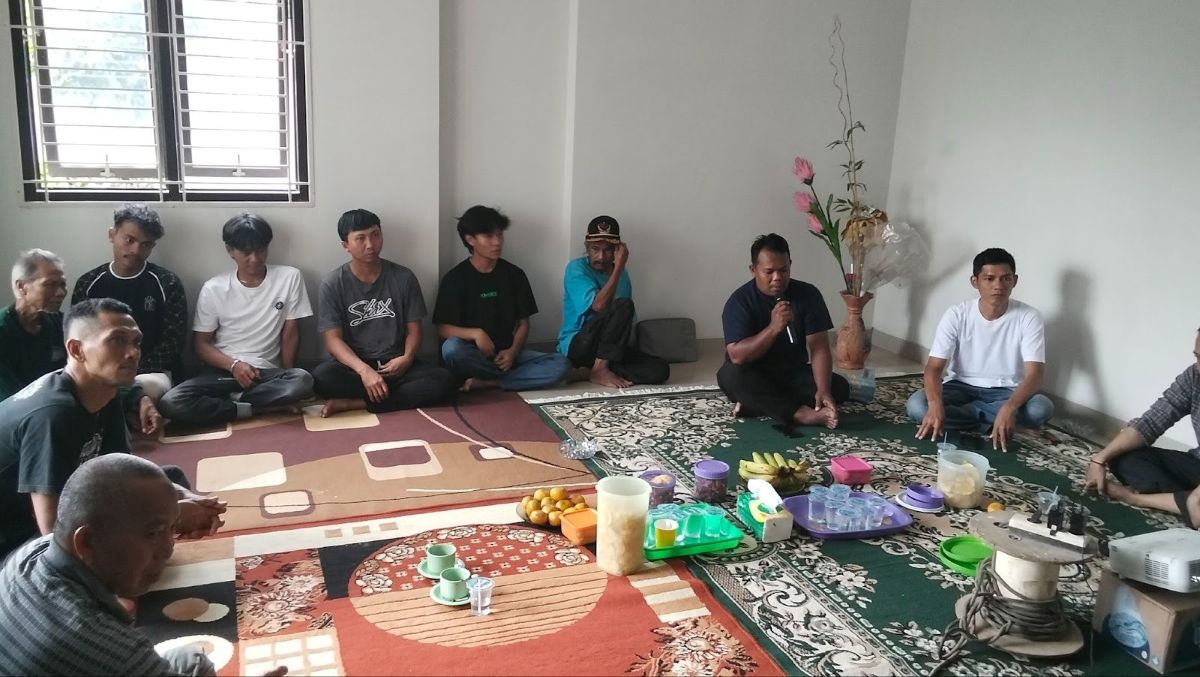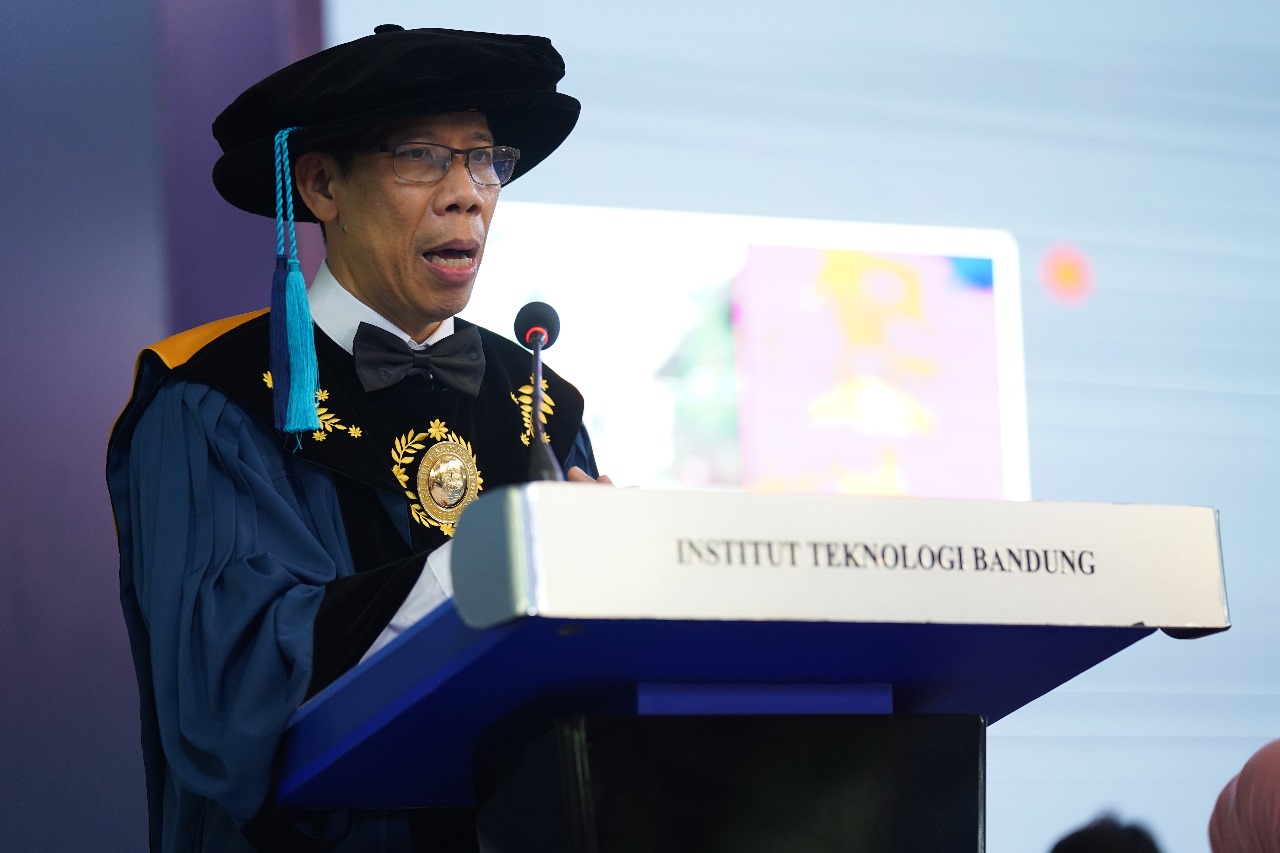Underwater Mud Volcanoes: Giants on the Backyard of Tanimbar Island Residents
By Adi Permana
Editor Adi Permana

BANDUNG, itb.ac.id – 7.9 Richter Scale earthquake that hit Southeast Maluku on 9 January 2023 was a rather interesting phenomenon. Under the sea surface of Teinaman Village, Wua Laboba District, Wua Laboba Regency, a giant mud mound appear and form a new island.
Several observations that were made pointed out two main hypotheses, that the mound is a mud volcano phenomenon or that it is a mud diapir.
Geologically, mud volcanoes tend to form in a tectonically active region, such as at the edge of a tectonic plate. Tectonic activities in that area can form a pathway for subsurface fluid to ascend to shallower areas. The flow of the fluid is initiated by a change in pressure and can flow through fault zones and cracks.
Two things that can change underwater pressure are earthquakes and rapid sedimentation. The continuous movement of tectonic plates results in rock structures storing accumulated forces that will be released suddenly in an earthquake. The sudden release of force will cause the pressure on the rock formation to change, especially near the fault zone areas.
Learning from mud volcano eruptions that happened in many parts of the world, this phenomenon does not always appear right after an earthquake, but it can reach as long as 1 to 2 years between the eruptions period. Even so, the mud volcano phenomenon in Tanimbar caused a new island to form.
According to Dr. Alfend Rundyawan and Dr. Astyka Pamumpuni from the Faculty of Earth Sciences and Technology ITB, this phenomenon is very special because according to previous knowledge on the formation of mud volcano islands, this process is usually very slow, even reaching thousands of years. Therefore, to reach the surface, underwater mud volcanoes must go through a long process of repeated eruption.
The rate of formation of the island is determined by the rate of volcano eruption and its accumulation under the sea surface. The mud composition also plays a significant role because the larger its solid proportion the faster its sedimentation rate. The position of the mud eruption also has a big impact on the sedimentation process.
Specific to the underwater eruption, the accumulation rate is very dependent on ocean waves and currents. If the waves and currents are fast, eruption material will be carried to and accumulated in other areas. This will hamper the accumulation process of the eruption materials, especially in deep areas.
Dr. Alfend and Dr. Astyka on Rekacipta ITB which was published in Media Indonesia on 28 March 2023 edition explained that the source of materials that erupted will impact the geometry of the surface formation. If the mud originated from a deep rock formation and was crushed by thick sediment, the formation product will have a diameter of more than 2km and with height of more than 200m.
On the other hand, if the sediment was not well-consolidated and came from shallow depths, the mud volcano will have a diameter of around 1-2 km and a height of 100-200m. Often, in areas with high currents, what is left on the surface can be underwater canyons, pockmarks, and gas chimneys.
A visit from the ITB Geodynamics and Sedimentology Research Group on several islands north of Tanimbar Island showed that these islands were formed as a result of mud volcano eruptions in the past. The mud sources are sediments that carry fragmented blocks from much older sediments. The emergence of these mud volcanoes did not happen suddenly and isolated.
This phenomenon is a culmination of a long process that happened underwater. This phenomenon needs to be responded to correctly and responsibly to ensure the safety of human lives and properties in the surrounding area.
Inspection of newly formed islands needs to be carried out. In addition to that, other aspects such as tectonic activities, mudflows, natural gas emissions, and underwater slope instability also need to be inspected. This information gathering can be done through observation or by analyzing data from the previous eruption. Potential hazard assessments are the basis for carrying out a disaster mitigation plan.
Observation programs need to be carried out to track the mud volcanoes' activities and to detect any changes that may indicate an eruption. The scopes of this program are seismic surveys, long-distance imaging, and on-site observation. Gathered data then needs to be communicated regularly, transparently, and reciprocally with local residents so that they are aware of the risk possessed by the mud volcanoes. This includes the activities of the mud volcanoes, evacuation plan, and accurate and latest emergency plan.
*This article had been published in Media Indonesia rubric Rekacipta ITB, the complete article can be read at https://pengabdian.lppm.itb.ac.id
Reporter: Sekar Dianwidi Bisowarno (Bioengineering, 2019)
Translator: Favian Aldilla R (Civil Engineering, 2019)

.jpg)
.jpg)

.jpg)
.jpg)


